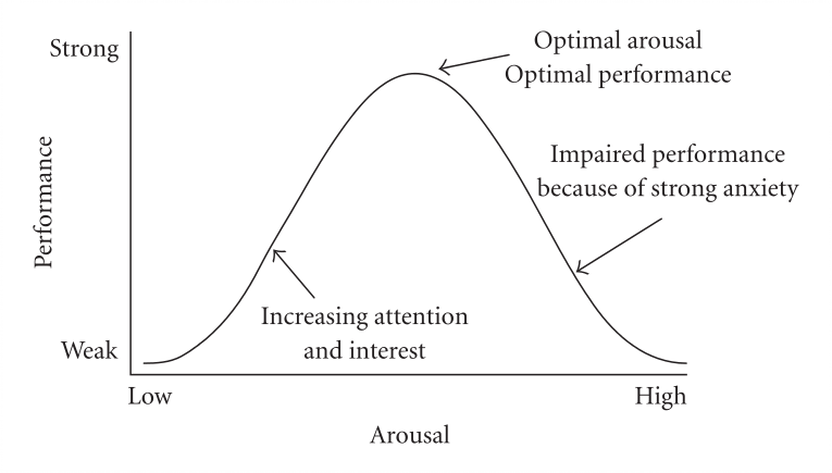In the first of a three-part series, Nick Humphrey considers the importance of pushing your boundaries and getting out of your comfort zone. The growth zone is where you are at your most productive, fulfilled and creative.


Your comfort zone is a psychological state where you operate in a low stress, low risk way, your skill matches the task, and performance is steady. Your growth zone is where skills are being challenged, you are uncomfortable, your stress levels are raised but so is your performance.
growth.
Think about when you have been at your best, when you have achieved something really noteworthy? Guaranteed it was when you were out of your comfort zone. But if you push too far or for too long you’ll hit the panic zone, then become overwhelmed and performance with plummet. Pushing your boundaries requires careful research, planning and coaching.
What is your comfort zone?
“No one likes to move beyond his or her comfort zone, but that’s really where the magic happens. It’s where we can grow, learn, and develop in a way that expands our horizons beyond what we thought was possible.”
– Andy Molinski
The comfort zone is a psychological state where:
-
Your routines, behaviours allow you to operate in a low stress, low risk or anxiety-neutral way [1];
-
Your skill level matches the task;
-
You are at ease, in control;
-
Your performance is steady.
An important element of this definition is that if there no change in either the skills being applied or level of stress, performance remains constant. Conversely, if the skills being applied or anxiety level change, then performance will also be changed either up (or down). [2]
Simply put, your comfort zone is where your activities fit a routine that minimizes stress and risk. It provides a state of mental security: low anxiety, reduced stress but lower performance. Pushing out of that zone may increase stress but it is where you are your best. Your most productive. Most people will tend to spend bulk of their time in the comfort zone. It is a natural state.
Dan Pink calls it the Goldilocks zone:
“We need a place of productive discomfort. If you’re too comfortable, you’re not productive. And if you’re too uncomfortable, you’re not productive. Like Goldilocks, we can’t be too hot or too cold.”[3]
Categories: Any goal or challenge falls into one of three different zones: comfort zone, growth zone (sometimes called the learning zone), or panic zone (sometimes called the danger zone).

If your goal currently sits in the panic zone, you won’t be able to achieve it now – it would be too stressful, too challenging. You need to grow your comfort zone by doing similar tasks that sit in the growth zone (that area where the tasks are challenging but not overwhelming).
As you do more tasks in your growth zone, they become easier and less stressful, your skills increase and your comfort zone grows. Over time challenges that were originally in your panic zone, move into your growth zone and eventually into your comfort zone.
Relative anxiety: Yerkes and Dodson conducted a series of experiments on mice in 1907 to investigate the impact of anxiety on performance. They found that anxiety improves performance until an optimum level of arousal has been attained, beyond which performance is reduced as higher and higher levels of anxiety are reached.[4] This is represented in the diagram below, known as Inverted-U.

Their conclusion was that increasing anxiety will boost performance but that too much anxiety will decrease performance. So if we stay in our state of relative comfort our performance will be steady. To increase performance we need a state of relative anxiety, where our stress levels are slightly higher than normal. Too much anxiety, however, and our performance drops off sharply.[5] Experiments have been replicated on people to test the effect of arousal on performance with the same results.
Cycle: Your comfort zone isn’t necessarily holding you back. We all need to be able to retreat, re-group and re-energise after pushing outside our boundaries.[6] You also need time to reflect upon and assimilate the lessons you learnt whilst outside your comfort zone. Furthermore, working outside your comfort zone is stressful and tiring. If you tried to work in the growth zone all the time you would burn out, so cycle back and forth between comfort and growth.
Personal: Remember your personal comfort zone is quite different from everyone elses. So what was effortless for a colleague might paralyse you. Similarly, something you find relatively easy to do to expand your horizons, might create anxiety and stress for someone else.
Complacency: If you never push out of your comfort zone you become complacent and potentially unwilling (or in extreme cases, unable) to change. Your fears can escalate, compounding on each other and become insurmountable.
Fear of failure: Pushing out of your comfort zone means you are risking failure. This fear often drives inertia. It is safer and easier to just stay in your comfort zone than to risk the physical, emotional, financial loss of working in a zone where you are unsure about your skills and capabilities. High performers know that achieving great things is never easy and takes many attempts. They know that if at first you don’t succeed, you need to try and try again. They have the grit and resilience to dust themselves off after a failed attempt and have another go using what they have learnt.
Many of the successful CEOs, artists, sportpeople and entrepreneurs we interviewed said that one of the reasons for their success was that they had learnt about the virtue of hard work and resilience as a child growing up. Many played sport at high levels, which taught them there can be only one winner. Others did cadets at school or joined the military as a reservists and endured physical and mental tests which gave them discipline and toughness. Many worked multiple jobs throughout school and university which also gave them a sense of resilience and independence.
John Dyson the inventor of the famous Dyson vacuum:
“I made 5,127 prototypes of my vacuum before I got it right. There were 5,126 failures. But I learned from each one. That’s how I came up with a solution. So I don’t mind failure. I’ve always thought that schoolchildren should be marked by the number of failures they’ve had. The child who tries strange things and experiences lots of failures to get there is probably more creative…
Initiate a failure by doing something that’s very silly, unthinkable, naughty, dangerous. Watching why that fails can take you on a completely different path. It’s exciting, actually.”[7]
Arianna Huffington, co-founder and editor in chief of The Huffington Post, describes her view on failure:
“My mother used to call failure a stepping-stone to success, as opposed to the opposite of success. When you frame failure that way, it changes dramatically what you’re willing to do, how you’re willing to invent, and the risks you’ll take.”[8]
About the author
Nick Humphrey is the managing partner of Hamilton Locke. He is the Chairman of the Australian Growth Company Awards and author of a number of best-selling books on business and leadership. His latest book is Maverick Executive: strategies for Driving Clarity, Effectiveness and Focus, published by Wolters Kluwer.
Sources
[1] Judith M. Barwick, “Danger in the Comfort Zone,” American Management Association, 1991 as quoted Alina Tugend, “Tiptoeing out of one’s comfort zone (and of course, back in),” The New York Times, 11 Feb 2011 http://www.nytimes.com/2011/02/12/your-money/12shortcuts.html?_r=0
[2] Alasdair White, “From Comfort Zone to Performance Management: Understanding development and performance,” www.pm-solutions.com, April 2008
[3] Daniel Pink, “Drive: the surprising truth about what motivates us,” Riverhead, 2009
[4] Yerkes, R., & Dodson, J. – ‘The Dancing Mouse, A Study in Animal Behavior’, 1907, Journal of Comparative Neurology & Psychology, Number 18, pp. 459-482
[5] Yerkes, id
[6] Alan Henry, “The science of breaking out of your comfort zone (and why you should),” 3 July 2013, Life Hacker, lifehacker.com http://lifehacker.com/the-science-of-breaking-out-of-your-comfort-zone-and-w-656426705
[7] Alexander Kjerulf, “5 reasons to celebrate mistakes at work,” Positive Sharing http://positivesharing.com/2010/06/top-5-reasons-to-celebrate-mistakes-at-work/
[8] Issie Lapowsky, “Arianna Huffington’s Rule for Success – Dare to Fail”, Inc. http://www.inc.com/magazine/201302/rules-for-success/arianna-huffington-dare-to-fail.html